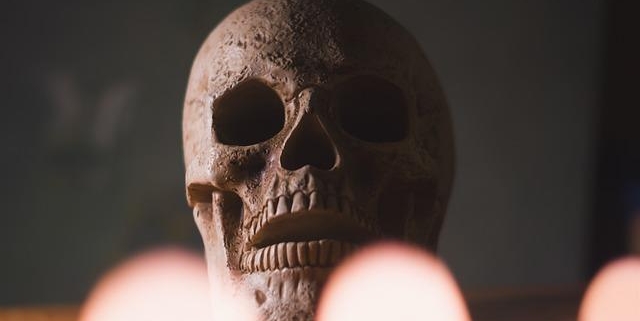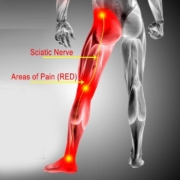5 Essential Tips for Building Bone Strength at Any Age
As we journey through life, our bones silently support us, providing structure and strength. Yet, bone health ofen takes a backseat in our wellness conversations, overshadowed by more immediate concerns. Whether you’re a sprightly teenager, a busy adult, or enjoying the golden years of retirement, building and maintaining strong bones is crucial at every stage of life. In this listicle, we’ll explore five essential tips that can empower you to enhance your bone strength, regardless of your age. From dietary choices to lifestyle habits, each tip is designed to equip you with practical knowledge and actionable steps to fortify your skeletal foundation. Get ready to unlock the secrets to resilient bones and embrace a healthier, more active future!
1) Prioritize Weight-Bearing Exercises: Engaging in activities that make you work against gravity is crucial for bone health. Whether it’s walking, jogging, dancing, or lifting weights, these exercises stimulate bone formation and increase density, making them essential for individuals of all ages
Engaging in weight-bearing exercises is one of the most effective ways to enhance your bone health. These activities require your muscles to work against gravity, which not only promotes bone density but also stimulates the production of bone-forming cells. Incorporating a variety of exercises into your routine can keep things interesting and cater to different fitness levels. Here are some activities you might consider:
- Walking: A simple yet effective way to strengthen bones, suitable for all ages.
- Jogging: Increases impact on bones, promoting density while improving cardiovascular health.
- Dancing: A fun way to engage your entire body, enhancing balance and coordination.
- Lifting weights: Targets specific muscle groups and bones, crucial for building strength.
To maximize the benefits,aim for at least 30 minutes of weight-bearing exercise most days of the week. You can also mix in some resistance training to further enhance your bone strength. Here’s a simple table to help you plan your weekly routine:
| Day | Activity | Duration |
|---|---|---|
| Monday | Walking | 30 minutes |
| Wednesday | Weight lifting | 30 minutes |
| Friday | Dancing | 45 minutes |
| Sunday | Jogging | 30 minutes |
By consistently engaging in these activities, you’ll not only strengthen your bones but also improve your overall fitness and well-being. Remember, it’s never too late to start prioritizing your bone health!
2) Embrace a Calcium-Rich Diet: Calcium is the building block of bone tissue, and incorporating dairy products, leafy greens, and fortified foods into your meals can help ensure you meet your daily requirements. Consider pairing calcium-rich foods with vitamin D sources,as this nutrient enhances calcium absorption
to fortify your bones,embracing a calcium-rich diet is essential. Calcium serves as the essential building block of bone tissue, and ensuring you consume adequate amounts daily can considerably impact your bone health. Incorporate a variety of dairy products such as milk, yogurt, and cheese, which are not only rich in calcium but also provide other vital nutrients. If you’re lactose intolerant or prefer plant-based options, consider leafy greens like kale, collard greens, and broccoli. Additionally, many fortified foods, such as orange juice and cereals, offer a convenient way to boost your calcium intake without compromising on taste.
Pairing calcium-rich foods with sources of vitamin D is a strategic move to maximize calcium absorption. vitamin D helps your body utilize calcium effectively, promoting stronger bones. Foods like fatty fish (salmon, mackerel), egg yolks, and fortified dairy products can provide the vitamin D you need. Consider the following table for a fast reference on calcium and vitamin D sources:
| Food Item | Calcium (mg) | Vitamin D (IU) |
|---|---|---|
| Milk (1 cup) | 300 | 100 |
| Yogurt (1 cup) | 400 | 80 |
| Salmon (3 oz) | 20 | 570 |
| Kale (1 cup, cooked) | 180 | 0 |
| Fortified Orange Juice (1 cup) | 300 | 137 |
3) Stay Active and Mobile: Regular physical activity not only strengthens bones but also improves balance and coordination, reducing the risk of falls and fractures.Aim for at least 150 minutes of moderate aerobic activity each week, along with strength training exercises on two or more days
Engaging in regular physical activity is a cornerstone of maintaining bone strength and overall health. Not only does it fortify your bones, but it also enhances your balance and coordination, which is crucial for preventing falls and fractures. To reap these benefits, aim for a mix of aerobic exercises and strength training. Consider incorporating activities like:
- Walking or jogging: A simple yet effective way to boost cardiovascular health.
- Cycling: A low-impact option that strengthens leg muscles while being easy on the joints.
- Swimming: Provides a full-body workout that is gentle on the bones.
- Yoga or Pilates: Improves flexibility and core strength, enhancing balance.
in addition to aerobic activities, strength training is essential for building and maintaining bone density. Aim to include exercises that target major muscle groups at least two days a week. this can include:
- Weight lifting: Using free weights or resistance bands to strengthen muscles.
- Bodyweight exercises: Such as squats, lunges, and push-ups that utilize your own weight for resistance.
- Functional movements: Activities like stair climbing or standing on one leg to improve stability.
| Activity Type | Frequency | Benefits |
|---|---|---|
| Aerobic | 150 minutes/week | Boosts heart health, burns calories |
| Strength Training | 2+ days/week | Builds muscle, increases bone density |
4) Limit Caffeine and Alcohol Intake: Excessive consumption of caffeine and alcohol can hinder bone health by interfering with calcium absorption and bone remodeling. Moderation is key; consider limiting these substances to maintain optimal bone strength throughout your life
Maintaining strong bones involves more than just calcium and exercise; the substances we consume play a significant role as well. Caffeine and alcohol, when consumed in excess, can negatively impact bone health. Caffeine, found in coffee, tea, and many soft drinks, can lead to decreased calcium absorption, which is essential for maintaining bone density. The effects of alcohol are equally concerning, as it can interfere with the body’s ability to absorb essential nutrients and disrupt the delicate balance of bone remodeling. Therefore, it’s crucial to monitor your intake of these substances to ensure your bones remain strong and resilient.
To promote optimal bone health, consider adopting the following strategies regarding your caffeine and alcohol consumption:
- Limit coffee and Tea: Aim for no more than 2-3 cups of coffee or tea per day.
- Choose Low-Alcohol Options: If you drink alcohol, opt for lower-alcohol beverages and limit consumption to moderate levels.
- Stay Hydrated: Drink plenty of water to help counteract the dehydrating effects of caffeine and alcohol.
- Mind the Timing: Avoid consuming caffeine or alcohol close to mealtime to maximize calcium absorption.
5) get Regular Bone Density Screenings: Staying proactive about your bone health is vital, especially as you age. Regular screenings can help detect early signs of bone loss, allowing for timely interventions and lifestyle adjustments to strengthen your bones and prevent osteoporosis
Monitoring your bone health through regular screenings is a proactive approach that can yield significant benefits as you age. These screenings, often recommended for individuals over the age of 50 or those at higher risk for osteoporosis, can provide crucial insights into your bone density. By identifying early signs of bone loss, you can take action before more serious issues arise. This might include dietary adjustments, increased physical activity, or even medication if necessary. Staying informed empowers you to make choices that promote stronger bones and enhance your overall well-being.
Incorporating regular bone density tests into your healthcare routine not only helps in early detection but also allows you to track the effectiveness of any interventions you may undertake. Consider discussing the following with your healthcare provider during your screenings:
- Your family history: Understanding genetic predispositions can guide your preventive measures.
- Dietary habits: Discussing your calcium and vitamin D intake can lead to personalized recommendations.
- Exercise routines: Your physical activity level plays a significant role in bone health; seek advice on optimal exercises.
To visualize the importance of these screenings, consider the following table that outlines the recommended age for initial screenings and frequency based on risk factors:
| Age group | Frequency of Screening | Risk factors |
|---|---|---|
| 50-64 years | Every 2 years | Family history of osteoporosis |
| 65 years and older | Annually | Previous fractures, low body weight |
| All ages with risk factors | As recommended by a doctor | Long-term steroid use, smoking |
The Way Forward
As we conclude our journey through the essential tips for building bone strength at any age, remember that caring for your bones is a lifelong commitment. Whether you’re just starting out or looking to enhance your existing routine, these strategies can empower you to maintain a strong foundation for your body.
Incorporating a balanced diet rich in calcium and vitamin D, engaging in regular weight-bearing exercises, and prioritizing a healthy lifestyle can make all the difference in preserving your bone health. It’s never too late to begin, and every small step counts towards a stronger future.
So,take these insights to heart and make them a part of your daily life. Your bones will thank you for it, today and for years to come. Here’s to building not just stronger bones, but a more resilient you!










Leave a Reply
Want to join the discussion?Feel free to contribute!